I finally made it out for a fishing trip after a dry spell of almost 5 weeks! The goal of this trip? Float fishing for steelhead on the Washington coast! In this post, I describe all the details that made this a successful steelhead fishing trip.
This steelhead trip certainly didn’t start out right. I made it out to the coast a bit later than I had intended and when I showed up at the Humptulips hatchery, there were already 6-7 people down there fishing the hatchery hole.
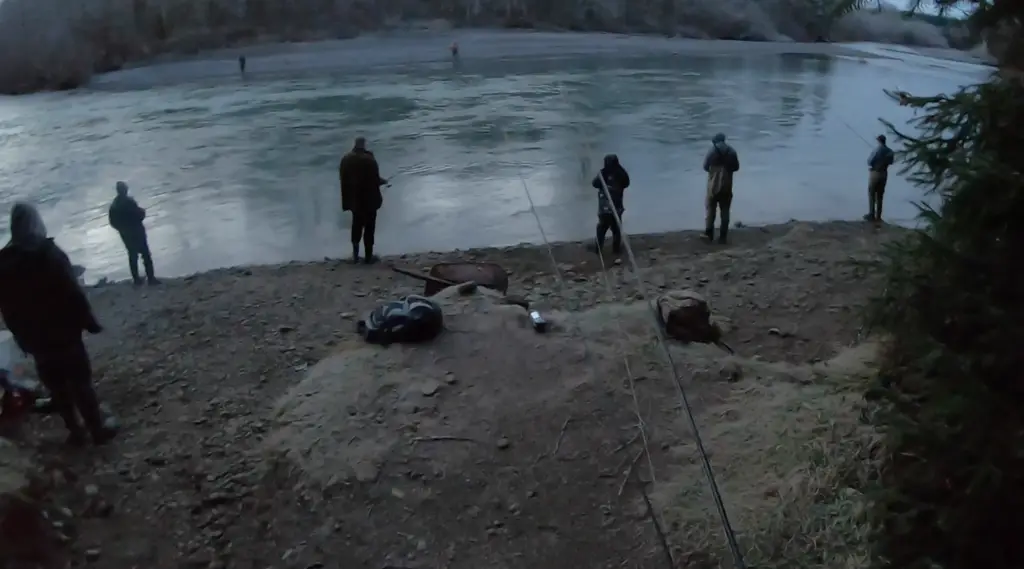
Someone even turned around just to tell me I was bleeping late! How nice. I considered squeezing in, as most anglers spaced that far apart will accommodate you, but I also just decided that even though I had been on the road for 2 hours, I didn’t want to spend my entire morning combat fishing.
I turned around and walked back to the hatchery parking lot, got back in my truck and kept driving.
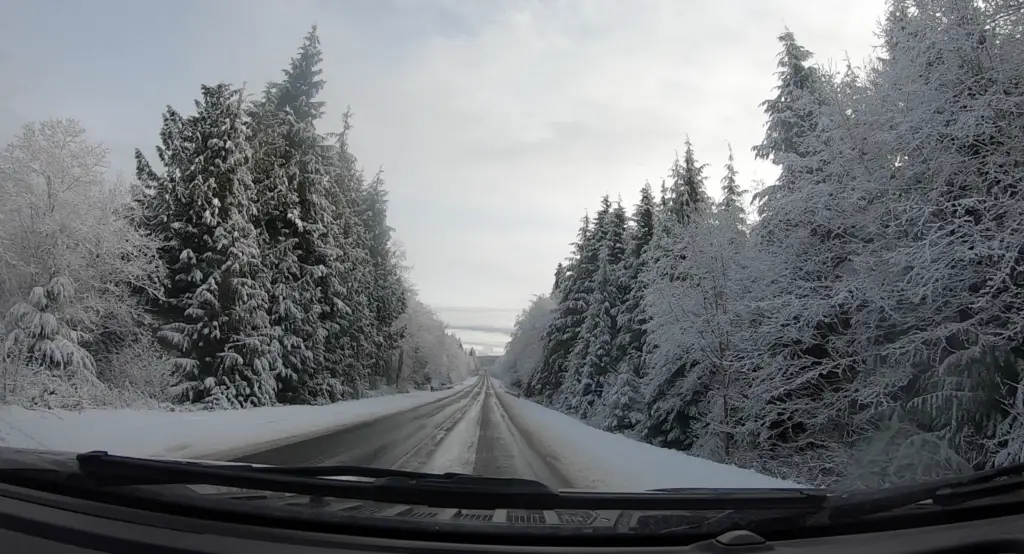
By the time I arrived at the next river, I was really off schedule. I like to be on the river right at first light or maybe 20 minutes before sunrise at the latest. My expectations of catching steelhead (making a cast?) were significantly lower for the day at this point.
As I hiked down to the unnamed river there were a few folks already there, but not fishing the spot I usually like to fish.
Quick disclaimer: For all those who recognize this river…I’m not giving away the name. It’s not a huge secret, as quite a few people know of it already. For those who want to know the name of the river…I’m not going to draw a map to “someone’s secret” fishing spots on this blog. I will try to help with any other aspect of fishing, but you will have to put some work in as well.
You can also visit my winter steelhead fishing page to get more info on where to look for steelhead in the rivers.
I went from thinking that I may not be able to even make a cast on this trip to having a prime piece of steelhead river all to myself almost 2 hours after first light.
My default approach for steelhead starts with float fishing. I usually either fish a soft bead under a float or a jig tipped with a bit of prawn. There are many jigs that can get it done, but my favorite is probably the nightmare pattern jig in 1/8th oz size. Nightmare pattern is just a combination of red, black, and white. In this case white head, black body, and red tail.
I bought mine from Brad’s jigs and I’ve hooked quite a few steelhead with them.
I start fishing by setting my bobber stop to a point that I’m pretty sure is too high in the water column. I then move the bobber stop up (making it fish deeper) after making several casts at one depth. If you take a look at the video, I actually had just moved my bobber stop up on the cast that hooked this steelhead.
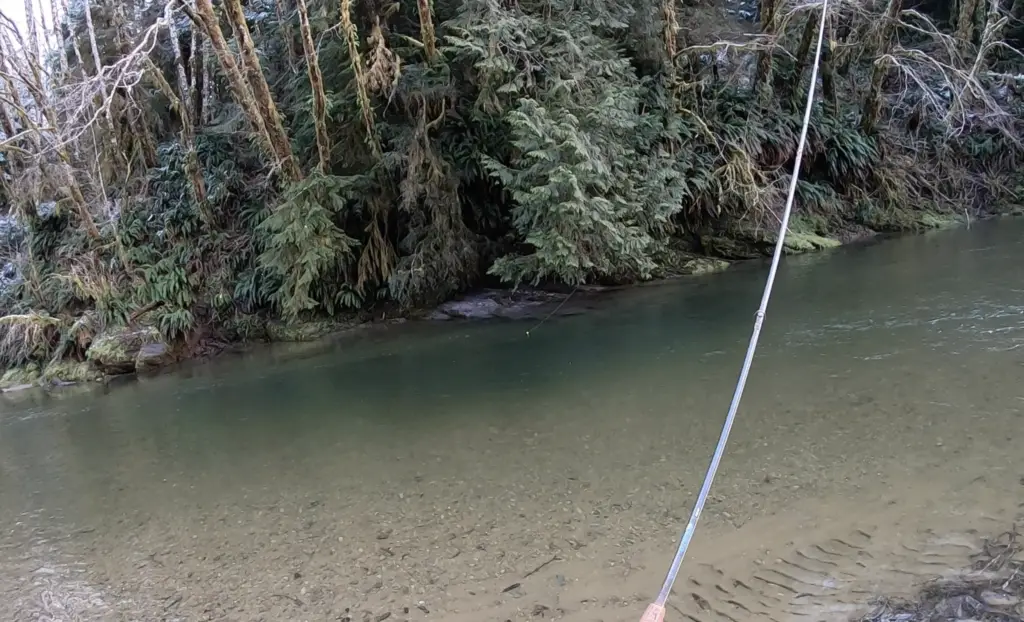
I probably made a dozen casts just trying to figure out the contour of the hole and how my float was drifting all at the same bobber stop depth.
I messed around a little bit more before buckling down and reminding myself of the “process of float fishing”.
That process is to pay very close attention to how your float is drifting and to keep adjusting for more depth until you find a steelhead or the bottom. If you find the bottom, your float will be pointed downstream, if not, it should be standing straight up and down. This of course means you’ve weighted it correctly. After you find the bottom, you can come up 2-6″ and fish just above the bottom where a steelhead will typically hold.
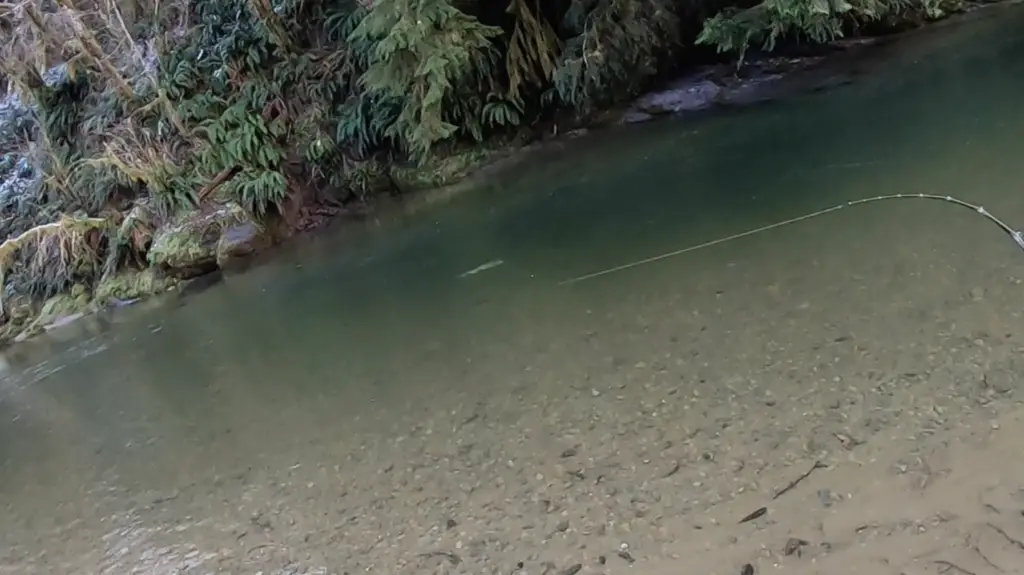
I had probably been there for about 20 minutes before I lowered my depth enough and connected with a nice chrome steelhead.
After a brief, but exciting battle I had the steelhead on the bank. I spent significantly more time driving than I did fishing, but when you are going home with chrome, it is all good.
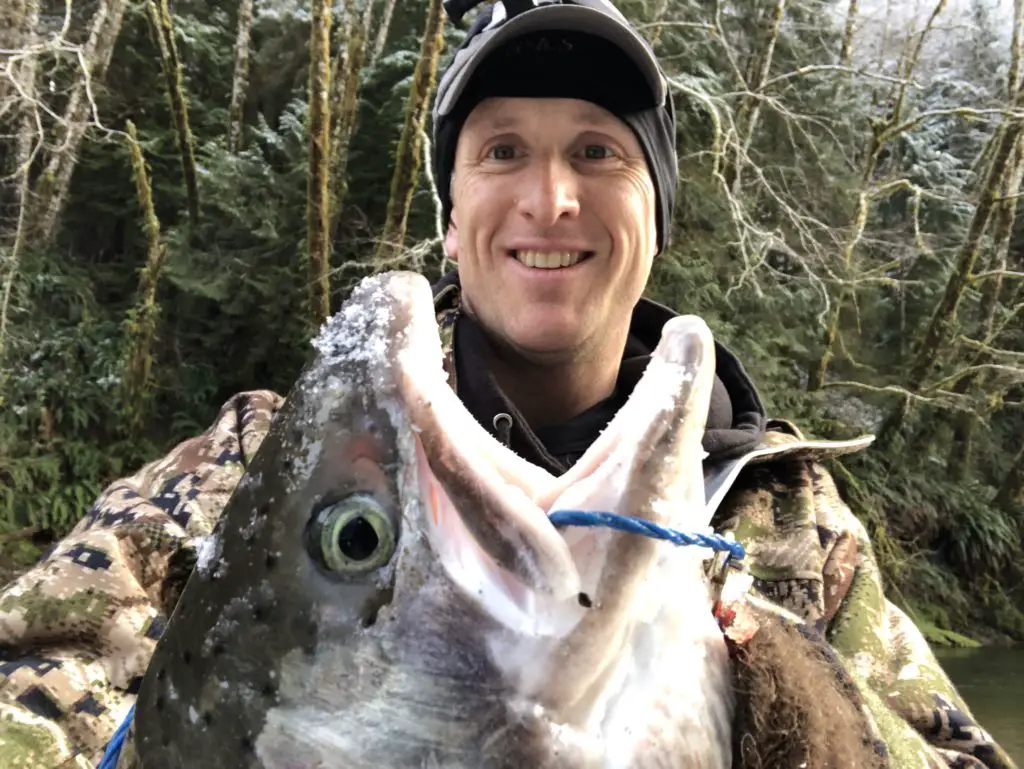
Winter steelhead fishing has been tough this season as poor ocean conditions have led to low returns and lots of closures all over Washington. Paying attention to water levels and concentrating fishing efforts on prime steelhead holding water (walking speed water) are key to encountering more fish.
What’s next? I should be floating the Chehalis for steelhead with a friend next week and I will hopefully have more to share on that trip and how that system is doing so far this year.